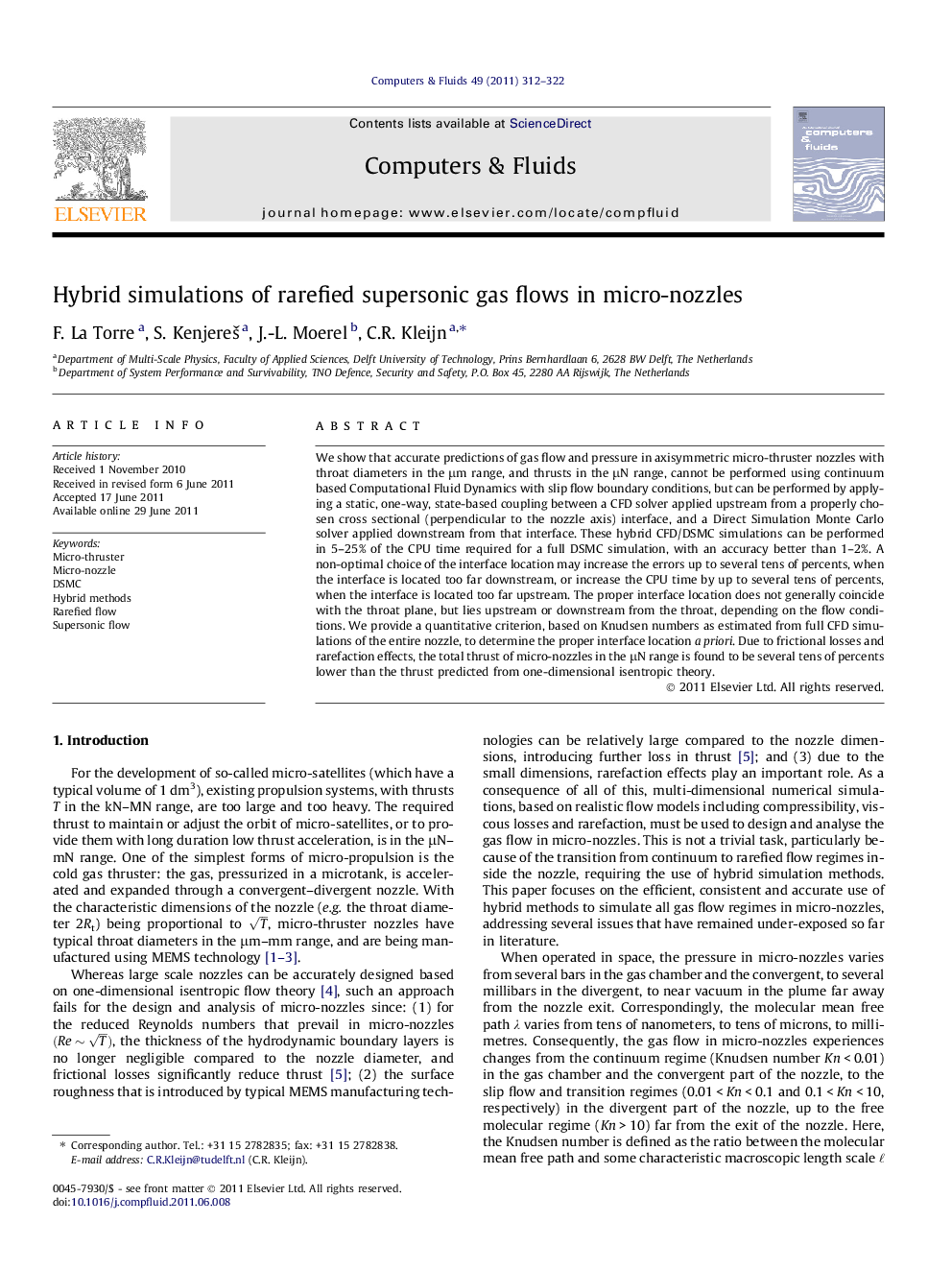| Article ID | Journal | Published Year | Pages | File Type |
|---|---|---|---|---|
| 762696 | Computers & Fluids | 2011 | 11 Pages |
We show that accurate predictions of gas flow and pressure in axisymmetric micro-thruster nozzles with throat diameters in the μm range, and thrusts in the μN range, cannot be performed using continuum based Computational Fluid Dynamics with slip flow boundary conditions, but can be performed by applying a static, one-way, state-based coupling between a CFD solver applied upstream from a properly chosen cross sectional (perpendicular to the nozzle axis) interface, and a Direct Simulation Monte Carlo solver applied downstream from that interface. These hybrid CFD/DSMC simulations can be performed in 5–25% of the CPU time required for a full DSMC simulation, with an accuracy better than 1–2%. A non-optimal choice of the interface location may increase the errors up to several tens of percents, when the interface is located too far downstream, or increase the CPU time by up to several tens of percents, when the interface is located too far upstream. The proper interface location does not generally coincide with the throat plane, but lies upstream or downstream from the throat, depending on the flow conditions. We provide a quantitative criterion, based on Knudsen numbers as estimated from full CFD simulations of the entire nozzle, to determine the proper interface location a priori. Due to frictional losses and rarefaction effects, the total thrust of micro-nozzles in the μN range is found to be several tens of percents lower than the thrust predicted from one-dimensional isentropic theory.
